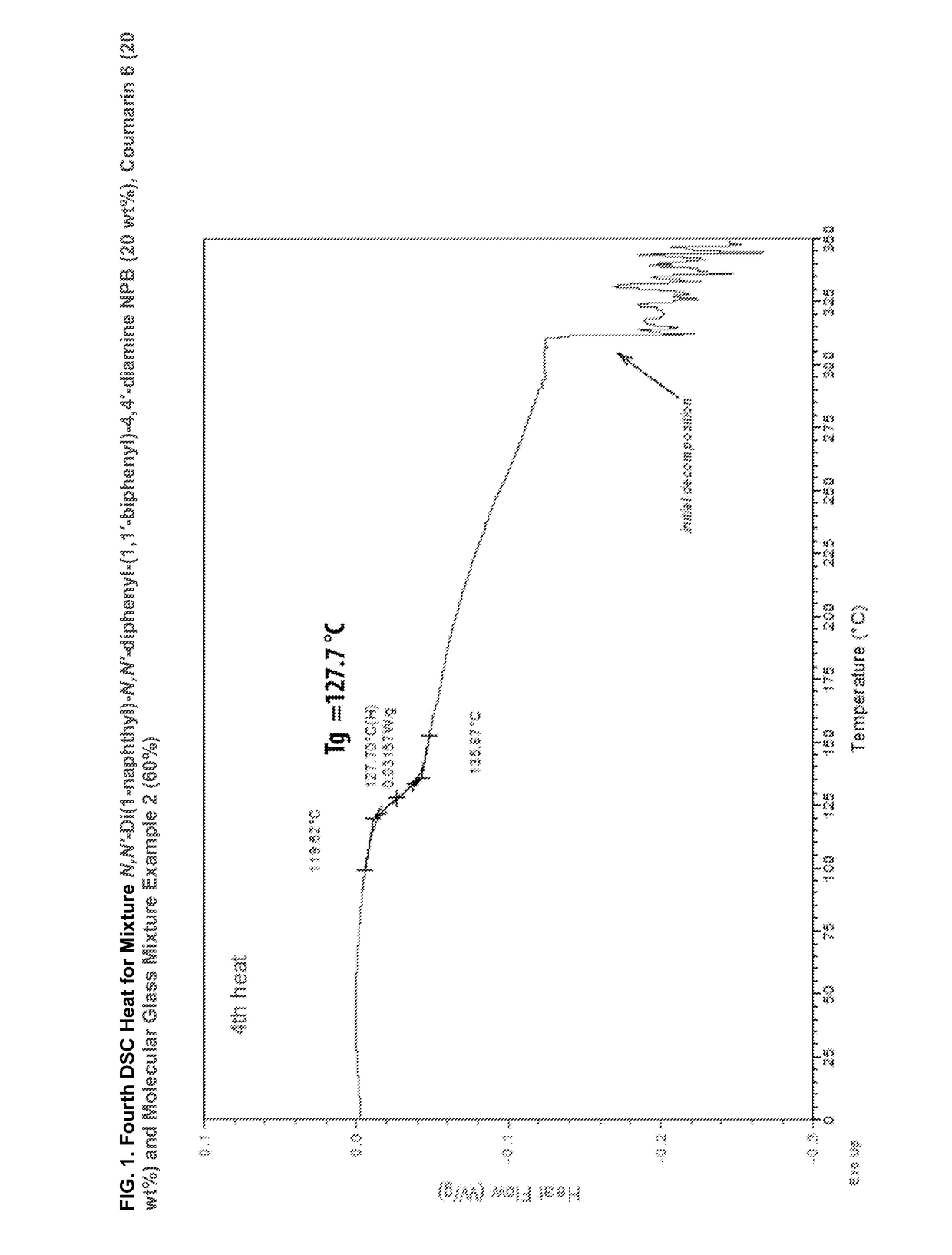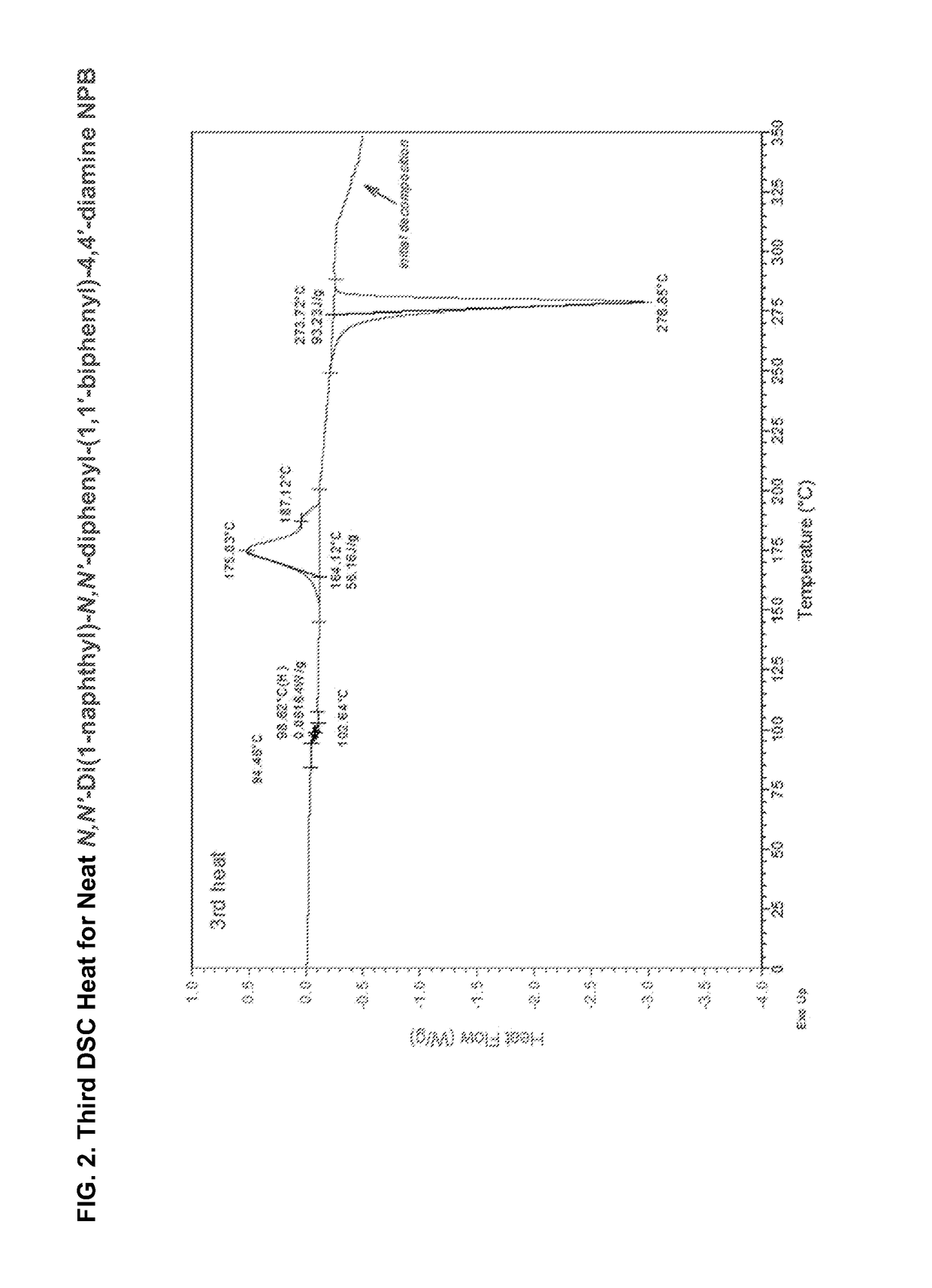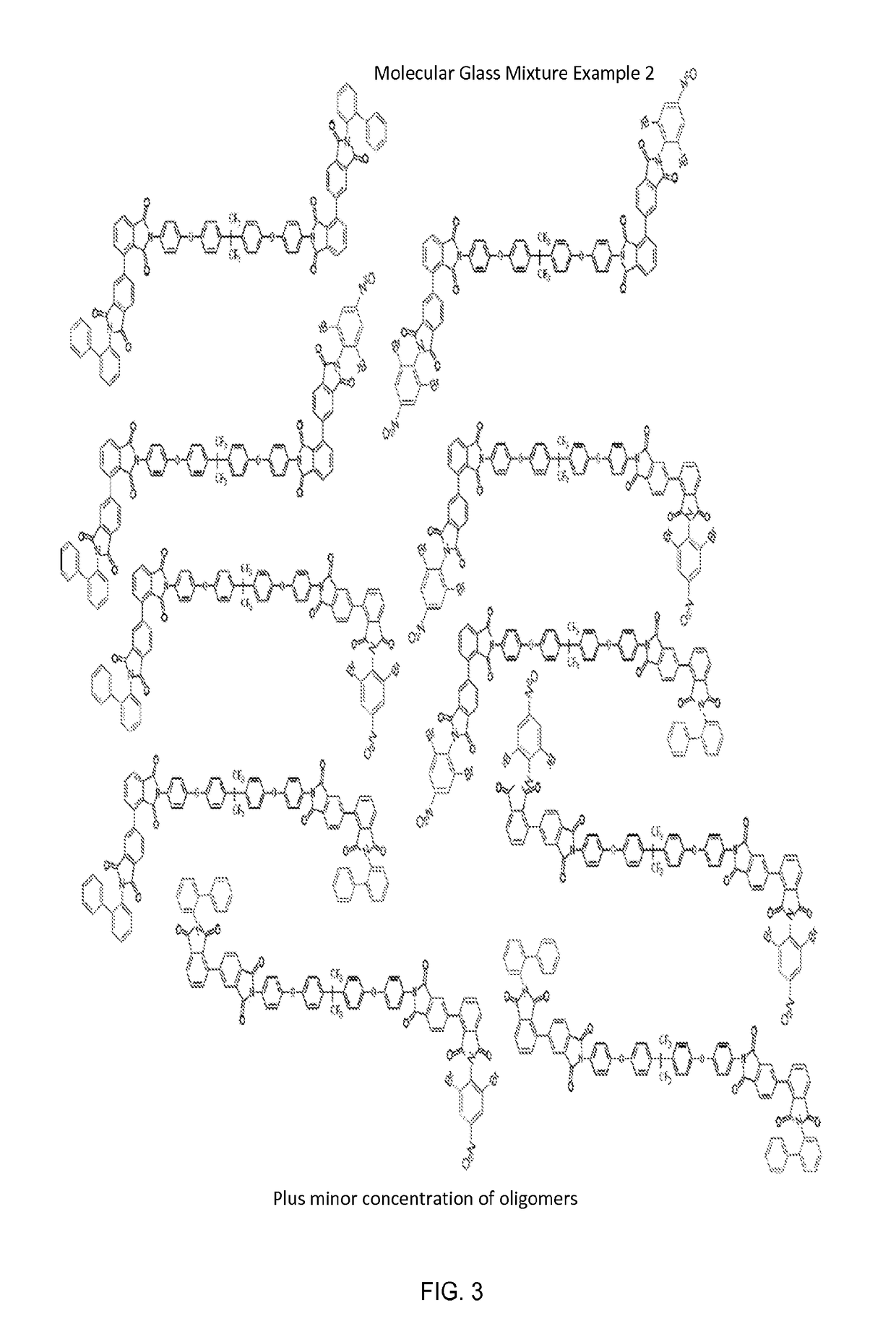Noncrystallizable sensitized layers for OLED and oeds
a sensitized layer and non-crystallizable technology, applied in the direction of luminescent compositions, semiconductor devices, chemistry apparatus and processes, etc., can solve the problems of materials crystallizing, many problems to be solved, and the properties desired for oled applications are generally only observed
- Summary
- Abstract
- Description
- Claims
- Application Information
AI Technical Summary
Benefits of technology
Problems solved by technology
Method used
Image
Examples
example 1
on of the Glass Mixture Example 1
[0243]Recrystallized 3′,3″,5′, 5″-tetrabromobisphenol A 178.3894 g (0.328 mole), distilled isobutyryl chloride 13.98 g (0.1312 mole), distilled benzoyl chloride 18.44 (0.1312 mole), and distilled 4-bromobenzoyl chloride 14.397 g (0.0656 mole), all are dissolved in approximately 1 liter of 1,2-dichloroethane, in a three-neck, round-bottomed flask. A condenser fitted with a drying tube and a positive-pressure nitrogen system is used to keep moisture out of the reactor vessel.
[0244]Triethylamine 70.5 g (0.697 mole) dissolved in 100 ml of 1,2-dichloroethane is added dropwise to the stirred solution in the reaction flask. After complete addition of the triethylamine, the reaction is allowed to continue for three additional hours at which time the precipitated salt is filtered off. The solution is subjected to the following extraction sequence:
[0245]a) two dilute sodium hydroxide solution washes (2% cold);
[0246]b) two dilute hydrochloric acid solution wash...
example 2
on of the Glass Mixture Example 2
[0249]In a 500 milliliter three-necked round-bottomed flask, fitted with a condenser were added 400 ml of anhydrous NMP solvent. Then 15.56 g (0.030 mole) of recrystallized 2,2-Bis[(4-aminophenoxy)phenyl]hexafluoropropane (HFBAPP) (Akron Polymer Systems) and 17.65 g (0.060) mole) of diphenyl-2,3,3′,4′-tetracarboxylic dianhydride (a-BPDA)) (Akron Polymer Systems), and 8.52 (0.066 mole) of isoquinoline (catalyst) were added. The mixture was gently heated to 70° C. under stirring for 2 hours. The intermediate mixture is shown below
[0250]Plus Minor Concentration of Oligomers
[0251]Then 5.08 g (0.03 mole) of recrystallized 2-aminobiphenyl (Aldrich), and 8.439 (0.03 mole) of recrystallized 2,5-dibromonitrobenzene (Aldrich) were added to the reaction vessel. The mixture was gently heated to 70° C. under stirring for another 2 hours, followed by refluxing for 5 hours. Thereafter, the mixture was poured into a mixture of methanol and dilute hydrochloric acid u...
example 3 compatibility
of 2-(4-tert-Butylphenyl)-5-(4-biphenylyl)-1,3,4-oxadiazole, “ButylPBD” and Molecular Glass Mixture Example 1
[0253]Compatibility was assessed by differential scanning calorimetry (DSC) of mixtures of the two materials at a rate of 10° C. / min under nitrogen at a flow rate of 50 cc / min. The two components were first weighed separately and then blended in the proper ratio by weight. The blend was then manually mixed, pulverized and remixed several times by hand in a glass petri dish. FIG. 4 shows the DSC scan (2nd heat) for neat ButylPBD. No glass transition temperature (Tg) is measured, even after all four runs. A sharp melting is seen at 138° C. These results are tabulated in Table 3. Also on Table 3 the results for Molecular glass mixture example 1 are show: no crystallization (Tc) and melting peaks (melt temperature (Tm)) after all four runs; only a Tg is measured at 59° C.
[0254]The second DSC heat for the 50 / 50 mixture of molecular glass mixture example 1 and ButylPBD is shown on ...
PUM
| Property | Measurement | Unit |
|---|---|---|
| Tg | aaaaa | aaaaa |
| Tg | aaaaa | aaaaa |
| Tg | aaaaa | aaaaa |
Abstract
Description
Claims
Application Information
 Login to View More
Login to View More - R&D
- Intellectual Property
- Life Sciences
- Materials
- Tech Scout
- Unparalleled Data Quality
- Higher Quality Content
- 60% Fewer Hallucinations
Browse by: Latest US Patents, China's latest patents, Technical Efficacy Thesaurus, Application Domain, Technology Topic, Popular Technical Reports.
© 2025 PatSnap. All rights reserved.Legal|Privacy policy|Modern Slavery Act Transparency Statement|Sitemap|About US| Contact US: help@patsnap.com



